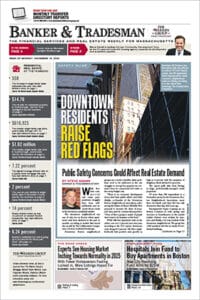The number of people nationwide seeking unemployment benefits fell last week by the most in more than three months. The figure was a hopeful sign one day before the government releases the April jobs report.
The Labor Department said Thursday that weekly unemployment aid applications fell 27,000 last week to a seasonally adjusted 365,000.
Applications are a measure of the pace of layoffs. When they fall below 375,000, it generally suggests that hiring will be strong enough to lower the unemployment rate.
The four-week average, a less volatile measure, ticked up to 383,500 last week, the highest level since December.
Last month, applications jumped after steadily declining since the fall. At the same time, hiring slowed. Those figures had sparked concerns that the job market was worsening after strong gains during the winter. But some economists said temporary layoffs stemming from the spring holidays might have inflated benefit applications.
On Friday, analysts expect the government to report that employers added 163,000 jobs in April, while the unemployment rate was unchanged at 8.2 percent. That would be an improvement from March, when job growth slowed to just 120,000. But it would be below the average 246,000 jobs a month added from December through February.
Many economists downplayed the March figures. They said a mild winter led employers to accelerate hiring in January and February. That made March’s job figures weaker.
On Wednesday, a private survey by payroll provider ADP said companies added only 119,000 jobs last month. The ADP report has deviated sharply from the government’s figures in the past and isn’t always a reliable indicator. For example, the government’s estimate of 120,000 jobs created in March was much lower than ADP’s estimate of 201,000.
Most economists said the ADP figures would not lead them to change their forecasts for job creation during April.
Other recent economic news has been more encouraging. A private survey this week found that the manufacturing sector expanded at the fastest pace in 10 months in April. Measures of new orders, production and exports rose. And a gauge of hiring rose to the highest level in nearly a year.
The unemployment rate has fallen to 8.2 percent in March from 9.1 percent in August. Part of the reason was that some people gave up looking for work. People who are out of work but not looking for jobs aren’t counted among the unemployed.






